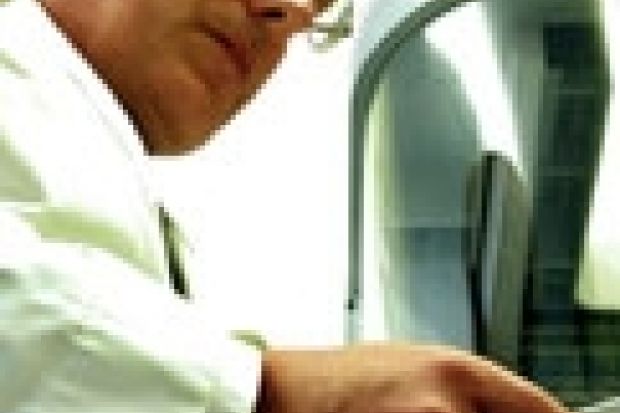One-stop clinics, or Oscars, could revolutionise NHS care. Claire Sanders reports
There is only one Oscar in the National Health Service but there could soon be a lot more. Oscar, or the One Stop Clinic for Assessment of Risk for foetal abnormality, has introduced new technologies and new multidisciplinary ways of working to the NHS. Women can now get the results of tests and foetal scans within days instead of weeks and can opt for terminations equally quickly.
As the social implications of this emerging technology are complex and controversial, they are the subject of a multidisciplinary research project. The project is part of a £5 million Innovative Health Technologies (IHT) research programme funded jointly by the Economic and Social Research Council and the Medical Research Council. It has also attracted funding from the private sector, principally from GlaxoSmithKline.
Speaking at a conference to launch the programme last week, Gillian Lewando-Hundt, of the School of Health and Social Studies at Warwick University and a researcher on the Oscar project, said: "The very speed of this new screening technology raises important issues for women. One of the questions we shall be asking is whether women should be given more time in which to make their decisions. We will be studying both an Oscar clinic and a traditional clinic."
Kevin Spencer set up and runs the Oscar clinic for the Barking, Havering and Redbridge Trust. He said: "The technology we use, principally a kryptor analyser, is based on chemistry that won its inventor, a French scientist called Jean-Marie Lehn, a Nobel prize. It is extremely user-friendly and is operated by a midwife at our clinic. As medics, we are seeking to understand its impact on women and how it should best be used. Principally we want to know - are we too quick?" George Radda, chief executive of the MRC, said: "We live in one of the most exciting times for biomedical research. Innovations in genetics, cloning and stem-cell research and new types of imaging technology will mean a completely different approach to healthcare in the next ten to 15 years. We at the MRC could be blind to the social and cultural implications of this technology. This sort of collaborative programme with the ESRC is new to us, and we are learning a lot from it."
Andrew Webster, director of the science and technology studies unit at the University of York, is the IHT programme director. He said: "Innovative health technologies, such as genetic diagnostics, pose new questions not just for doctor and patient, but also the hospitals, regulatory agencies, charities, and insurance companies that confront them. They also challenge our understanding of the body itself. They ask where its anatomical and social boundaries lie, and who has control and rights over them."
He argued that in the coming years there would be a move away from professional self-regulation towards the reshaping of clinical governance and notions of consent to reflect this more complex world of health delivery - and our trust in it.
The programme is unusual in bringing together social science, clinical and public health and other researchers. In its first phase, it has commissioned 20 projects. As well as the social implications of prenatal screening, these cover the regulation of innovative pharmaceuticals in the European Union and the United States, the risks of xenotransplantation, the governance of human genetics and the role of technology in death - exploring the idea of a "natural death".
Another project is on the role of the internet in providing information on health risks and benefits. Flis Henwood, senior research fellow at the School of Information Management at the University of Brighton and a researcher on the project, said: "After pornography, healthcare is the most sought-after information on the web - in fact, the two often co-exist as in the case of Viagra."
She said the project would consider moves to kite-mark health information on the web. "We have to balance a desire to ensure that information is correct, and not harmful, with a desire not to exclude alternative or radical new approaches."
On another project, researchers from York and Edinburgh University are compiling a historical sociology of the wheelchair. "For millions of disabled people, the most important technological innovation of the 20th century was the modern wheelchair," a synopsis of the research says.
The move from the invalid or bath chairs that dominated the late 19th century to an emphasis on wheelchairs designed to give users more independence will be charted and linked to the fight for greater social inclusion by people with disabilities.
"There is little social or no historical analysis that details the relations between these currents of social and technological change. Our research will fill this gap," says the synopsis.
Webster said that phase two of the IHT programme, which will be announced in the next few weeks, was likely to include more comparative studies, looking at the impact of these technologies globally and how different countries sought to regulate them.
Register to continue
Why register?
- Registration is free and only takes a moment
- Once registered, you can read 3 articles a month
- Sign up for our newsletter
Subscribe
Or subscribe for unlimited access to:
- Unlimited access to news, views, insights & reviews
- Digital editions
- Digital access to THE’s university and college rankings analysis
Already registered or a current subscriber?
